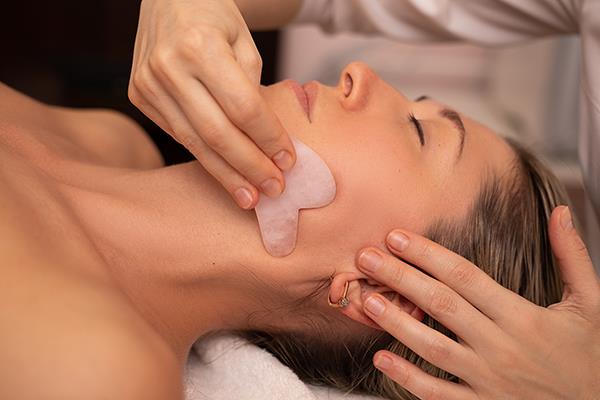
courtesy of beachbodyondemand.com
What Exactly Is Gua Sha?
Gua sha, a traditional Chinese medicine practice dating back 1,800 years, is making waves on social media thanks to influencers showcasing the technique. But it's more than just a trend. This ancient method involves rubbing the skin with smooth stones or metal tools, combined with warm oil, to promote blood flow, enhance range of motion, and relieve pain or soreness. Commonly referred to as "scraping" in the U.S., gua sha is believed to offer a form of lymphatic drainage massage, aiming to alleviate muscle tightness and discomfort.
Does Gua Sha Really Work?
For those curious about the efficacy of gua sha, the evidence, though limited, is promising. Studies have shown that individuals with chronic neck and low back pain experienced significant improvements in pain and mobility after undergoing gua sha treatment. While the technique is primarily superficial, it's touted by practitioners like Theresa Marko, PT, DPT, MS, for its ability to release tension and promote healing in muscles that are spasmodic or overly tight.
Professional Techniques and Tools
Gua sha is not a one-size-fits-all remedy and should ideally be performed by trained professionals. Techniques vary, from the traditional use of coins or spoons to more modern stainless steel tools used in chiropractic and physical therapy practices for myofascial release. The goal is to target tight muscles and encourage the movement of stagnant blood, thereby reducing internal heat and shifting negative energy. Tools range from rollers and S-shaped instruments to specialized shapes designed for specific body parts, ensuring a comprehensive approach to muscle relief.
Frequency and Aftercare
How often should one undergo gua sha? According to licensed acupuncturist Aliks K. Lessa, once a week is ideal for easing muscle tension, allowing any bruising or red streaking—common side effects of the treatment—to heal. Integrating gua sha with other muscle relief products can also enhance its benefits, offering a holistic approach to recovery and wellness.
Takeaway
While gua sha may appear to be a simple technique, its roots in traditional Chinese medicine and its application by modern healthcare professionals underscore its potential as a therapeutic tool. Whether you're seeking relief from chronic pain or looking to incorporate a new element into your recovery routine, gua sha offers a time-tested solution. Always consult with a trained professional to ensure the best results and to explore how this ancient practice can be tailored to your needs.
*** We hold our sponsor in high regard *** |
| [TAG1]
Image Credit: Francis Grant / AuthorsUSA.com |
Did you miss our previous article...
https://naturesmart.us/fitness/unlocking-the-power-of-zinc-your-guide-to-a-healthier-you
 HealthWellnessFitnessBeautyVideosPrivacy PolicyTerms And Conditions
HealthWellnessFitnessBeautyVideosPrivacy PolicyTerms And Conditions
